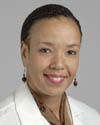What is Complementary and Alternative Medicine?
Complementary and alternative medicine (CAM) is a broad label that applies to many types of treatments and therapies. CAM treatments and therapies can be used as an alternative to the type of medicine that we expect a traditional health care provider in the United States to practice, or in combination with it. When CAM is combined with conventional medicine, the goal should be that the two practices complement each other, so that the patient can benefit from the best of both worlds. The term integrative medicine is also used when explaining CAM. CAM tends to consider the whole person. This includes a person’s physical, mental, emotional and spiritual being. CAM treatments are used to prevent illness, reduce stress, prevent or limit side effects or to control or cure a disease.
How popular is CAM?
Today, CAM is becoming more popular in the United States. A 1998 article by Dr. Eisenberg in the Journal of the American Medical Association reported that almost half of U.S. adults used some form of alternative medicine. In fact, more visits are made to alternative medicine providers than to all U.S. primary care physicians put together. Fifteen million adults who took prescription medications in 1997 were also taking herbal and vitamin supplements (a type of CAM). People paid an estimated $27 billion for alternative treatments that year, which is comparable to what was spent on U.S. physician services in 1997.1 A growing number of doctors who once viewed CAM as “quackery” are giving it a second look.
What is the history of CAM?
The roots of CAM reach deep into the history of many cultures. CAM has existed for thousands of years in ancient Chinese and Indian civilizations, just to name a couple. In comparison, the conventional Western medicine taught in the United States medical schools is actually quite new. Modern Western medicine goes back to the late 1700s and early 1800s. When it was new, “scientific medicine” often included dangerous treatments, which could be worse than the disease. Some doctors, looking for alternatives, borrowed from other cultures to develop homeopathy, chiropractic care, naturopathy, herbal therapy and osteopathy. These approaches relied on natural remedies and the body’s own ability to help itself heal.
Western medicine continued to overshadow the healing arts, or CAM. However, in the 1960s, interest in alternative forms of care strengthened, and it has continued to do so. In 1992, the National Institutes of Health founded the National Center for Complementary and Alternative Medicine (formerly the Office of Alternative Medicine). Also, many states are now granting various levels of medical status to naturopaths, acupuncturists, chiropractors, and osteopaths.
How are CAM therapies evaluated?
It is important that the same scientific evaluation which is used to evaluate traditional medical treatments be used to evaluate complementary and alternative therapies. With few exceptions, CAM has not been tested in large clinical trials, (studies that seek to measure the effectiveness of a given treatment in a large group of patients). One of the primary objectives of the National Center for Complementary and Alternative Medicine is to study the effectiveness of CAM, in the same way that conventional treatments are examined, before they can become part of the standard of care.
What are the major categories of CAM?
Today, CAM practices can be grouped into five major categories.
- Alternative Medical Systems: These are complete practices that have developed independent of conventional medicine. They include systems that have been practiced for over 2,000 years by over half the world’s population, such as Acupuncture and traditional Asian medicine, Ayurveda (practiced in India), Native American, and other native cultures’ healing practices. Homeopathic and naturopathic medicine are also examples of complete alternative medical systems, which have emerged over the past few hundred years.
- Mind-Body Interventions: These include a variety of practices focused on the mind’s capacity to affect the body’s function. Examples are meditation, relaxation, guided imagery, dance, music and art therapy, hypnosis, prayer and mental healing.
- Biological-Based Therapies: These are natural and biologically based practices and products, such as herbal, special dietary supplements and therapies. Some may overlap with conventional medicine.
- Manipulative and Body-Based Methods: These methods use touch, movement and manipulation with the hands as a diagnostic and treatment tool. Osteopathic and chiropractic manipulation, as well as massotherapy are included in this category.
- Energy Therapies: These therapies focus on energy fields within the body (biofields) or from other sources (electromagnetic fields). Therapeutic touch and Reiki are examples of biofield therapies, and the use of a TENS unit to treat pain is an example of an electromagnetic-based therapy.1
How do I talk to my health care provider about CAM?
Many health care providers are only now learning about CAM, and are beginning to recognize the important role that CAM plays in many of their patient’s lives. It is important that you share what you are taking, doing, and learning with your health care provider. Open communication is the most important aspect of the health professional-patient relationship. You should discuss which therapies or supplements you are using, because some complementary and alternative therapies may interfere with one another, or with other treatments.
1 Eisenberg DM, Davis RB, Ettner SL, Appel S, Wilkey S, Van Rompay M and Kessler RC. Trends in alternative medicine use in the united states, 1990-1097, Journal of the American Medical Association, 1998, 280 (18), 1569-75.
For more information:
Go to the –> the previously asked questions
This article is a NetWellness exclusive. 
Last Reviewed: Mar 27, 2006

|
Tanya I Edwards, MD, MEd |

|